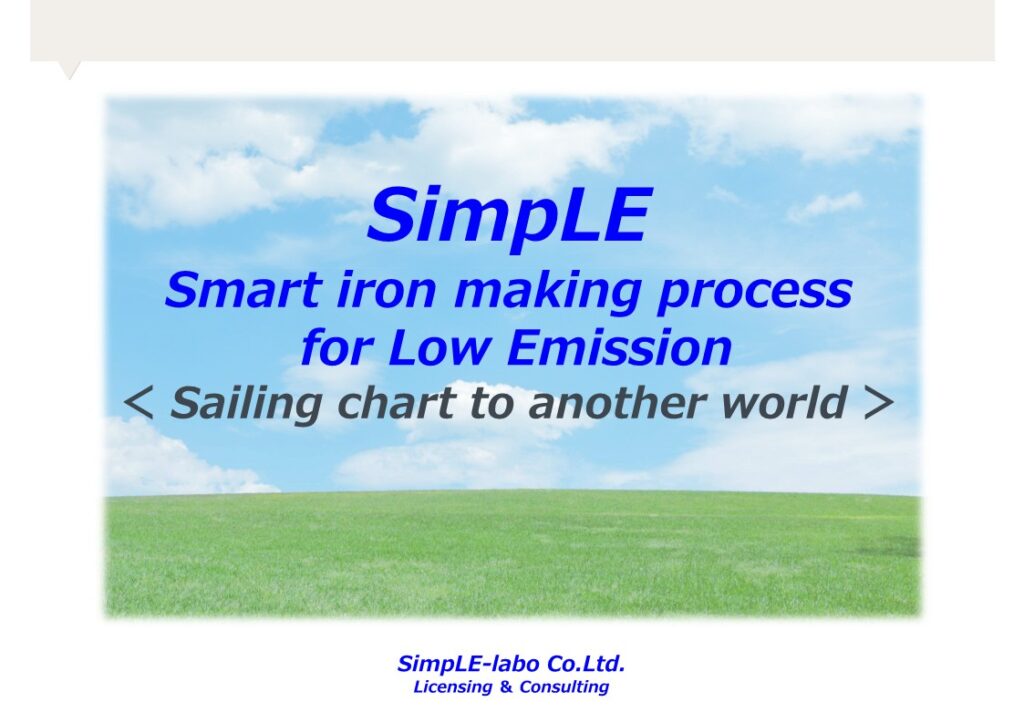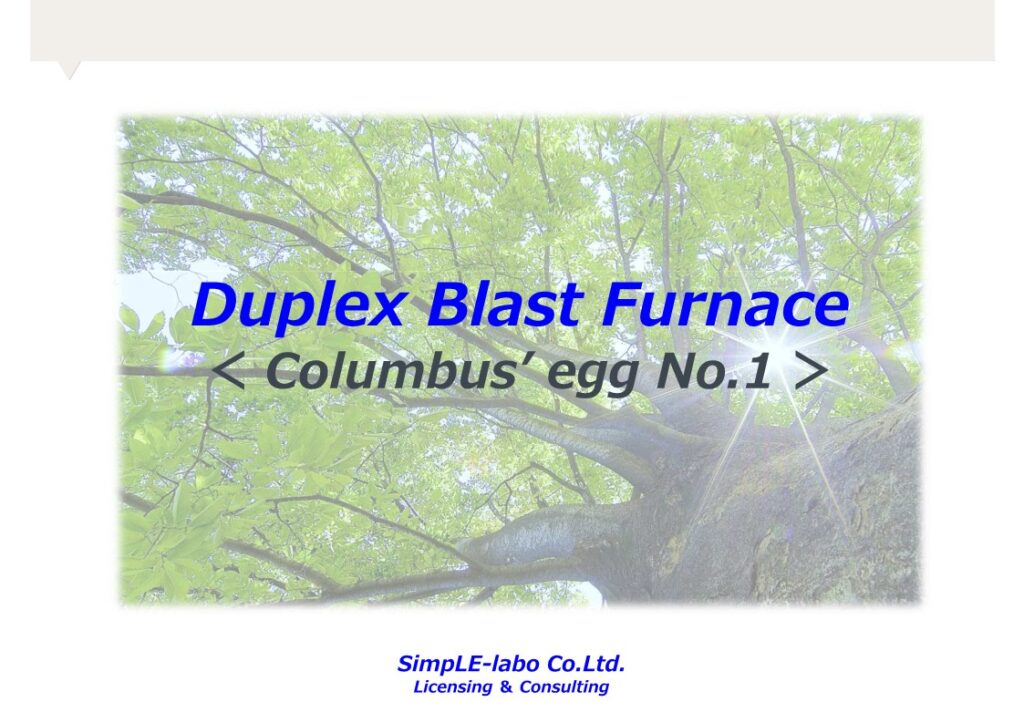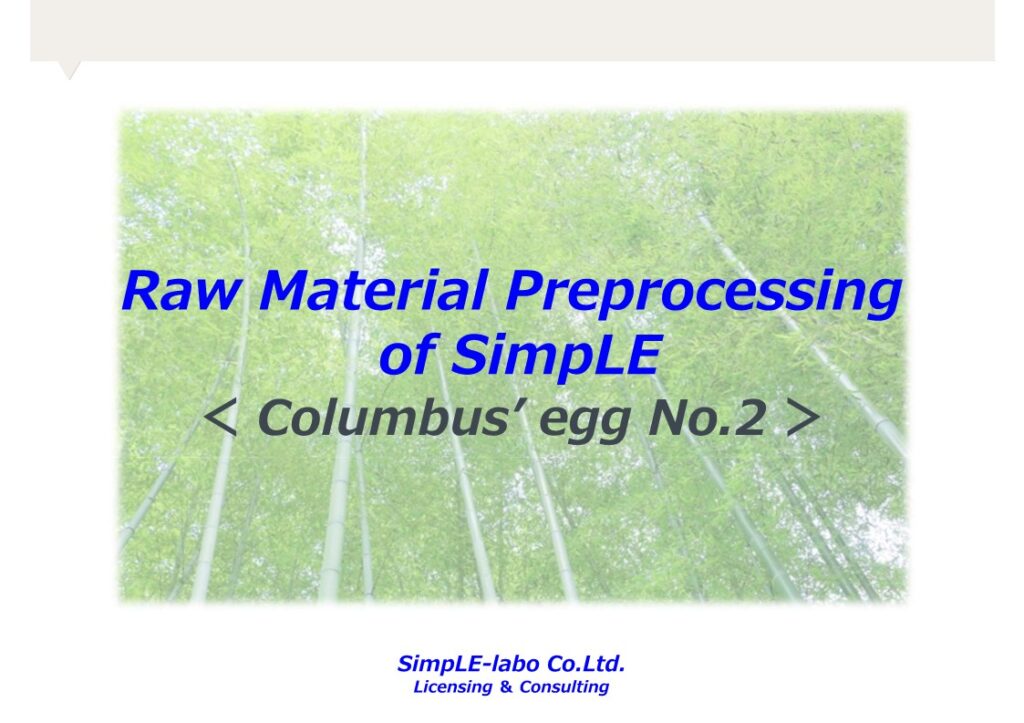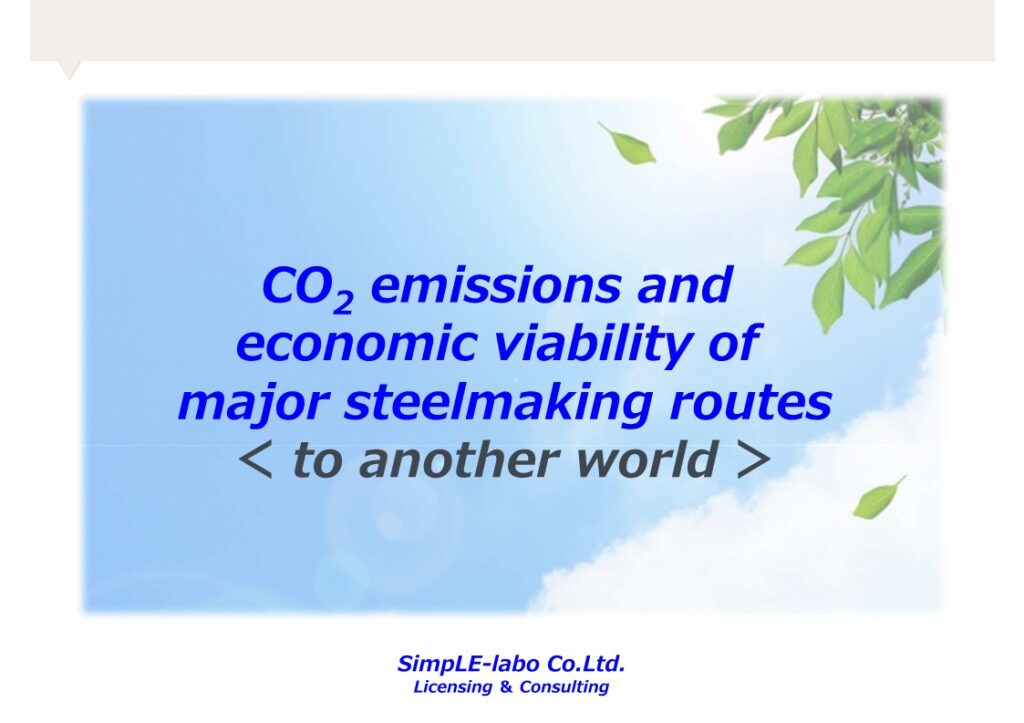Do you think that using clean hydrogen is the shortest way to reduce CO2 emissions?
Because hydrogen consumes a lot of energy to produce, transport and store, there is a dilemma besides its cost: the more CO2 emissions are reduced, the more energy shortages society will face. Carbon neutrality through hydrogen will be an endless struggle with the dilemma.
The steel industry is a hard-to-abate industry, responsible for about 10% of the world’s CO2 emissions. The trend to reduce CO2 emissions leads to a cliff of energy shortage by using hydrogen. To avoid this, we propose SimpLE (Smart iron-making process for Low Emissions), which aims to achieve energy savings and carbon neutrality together through a hydrogen-free blast furnace.
In Step 1, CO2 is halved by using the excess energy and halving the amount of coal. In Step 2, fossil fuel CO2 is reduced by >80% by replacing fossil fuels with waste (near renewable fuels). And in Step 3, 30% of the negative emissions are achieved by recovering CO2 from renewable fuels.
It is the only way to achieve both CO2 reduction, energy savings and production costs by using existing plants and infrastructure, drastically reducing coking coal and other fossil fuels, and using near renewable waste resources instead.
In order to stop global warming, all processes are asked about the efficiency and rationality (CO2 reduction rate, energy efficiency, economic efficiency), i.e. whether CO2 reduction measures can be willingly adopted by developing countries.
In this respect, we are confident that if you look at our website and documents, you will agree that SimpLE is the only solution to stop global warming from steel production.





















